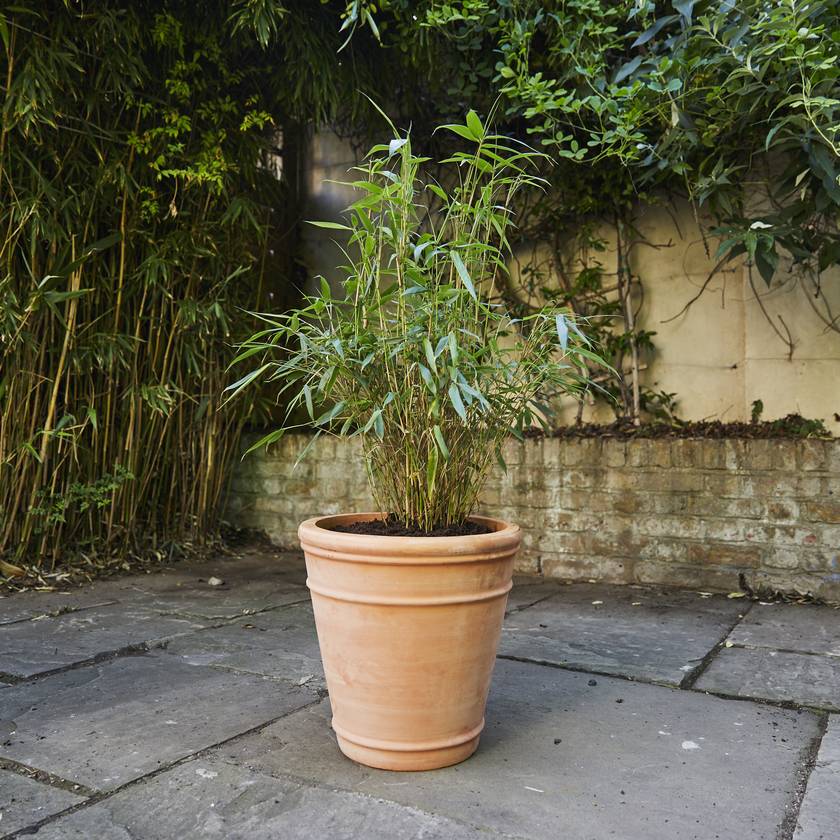How to water my plants?
The best place to start for watering intel is the product page of the plant you’ve bought from Patch. This is where you’ll get bespoke information about what your plant needs to thrive. Just scroll to the bottom for tips on when and how much to water it. There are, however, a few general rules for watering.
The best tip involves getting your hands dirty
Stick a finger in the pot until the soil reaches your knuckle. How does it feel? It should feel a little moist by your fingertip. If it’s not, give it a good drink. If it feels very wet, then you can let it be.
If your plant is ready for a soak, pour water onto the soil until the pot is about to overflow and then allow it to drain for thirty seconds. Then, do this again to make sure that every inch of root gets a drenching.
Water the compost, not the plants. Giving the container a really good soak, so that water eventually runs out of the bottom of the pot, is much better than frequent dribbles. If the water runs out immediately, it means the compost is so dry that it has shrunk away from the pot, and the water is just running straight down the sides, leaving the compost – and the roots – as dry as before .
In that case, go slow and steady, so the water really soaks in. Or, with small pots, dunk them in a bucket of water and hold under until air bubbles stop rising. Then lift out and drain.
Indoor plants
For indoor plants, if you find that after ten minutes there is still excess water at the bottom of the pot, then pour this water down the sink as the plant has quenched its thirst. Not doing this risks saturating the roots and killing the plant.
Outdoor plants
For outdoor plants with a drainage hole, the excess water will simply escape through the drainage hole at the bottom of the pot. If the water runs out immediately, it means the soil is so dry that it has shrunk away from the pot, and the water is just running straight down the sides, leaving the compost – and the roots – as dry as before. In that case, go slow and steady, so the water really soaks in . Or, with small pots, dunk them in a bucket of water and hold under until air bubbles stop rising. Then lift out and drain.
Most plants appreciate being left to dry out a little bit between waterings, otherwise their roots can rot. But if your plant is like Bertie or Boo, the Fargesia Bamboo (below), they prefer things a little damp. To be on the safe side, check the product page.
But what about when it rains?
Your plants will form a pretty effective umbrella over the compost so make sure you keep an eye on your plants’ water levels even if it's raining!
Feeding plants
In the growing season, plants need food as well as water. For outdoor plants the easiest way by far is using Miracle Gro Pot Shots – controlled release fertiliser plugs which will last for 6 months or more. Plug them in any time during the growing season (March – September). See on the pack how many you need for the size of your container then just push them down into the compost with your finger. Job done .
For indoor plants, always keep a pot of Baby Bio nearby. Best to mix this into your watering can once a month during the growing months.
Keeping plants healthy beyond watering and feeding
Bugs are less common in the city but keep a close eye on the plants – much easier to deal with the first signs of infestation. If you see clusters of tiny bright green or black flies at the tips of shoots or on buds, they ‘re aphids . Either pinch the shoot off and bin it, or mix some washing-up liquid with water in a spray bottle and blast them off.
Plan watering kit
You’ll need a watering can and the choice is vast – Patch have a larger one for outdoor plants and a smart decorative one for your house plants. Typically, a long spout is more practical for pots than a short stubby one, and since it may well have to live on your balcony or terrace, choose one that’s good to look at through the living room window! Other than that , household scissors can serve as secateurs and an old serving spoon will do the job of a hand trowel.

